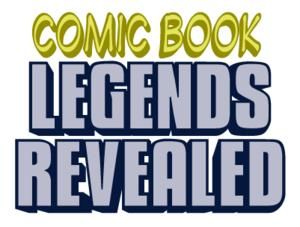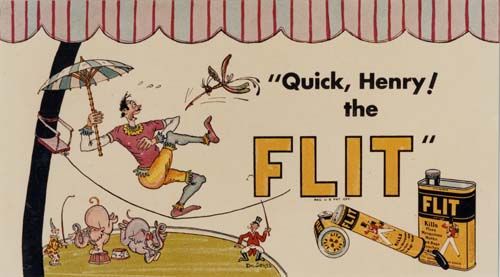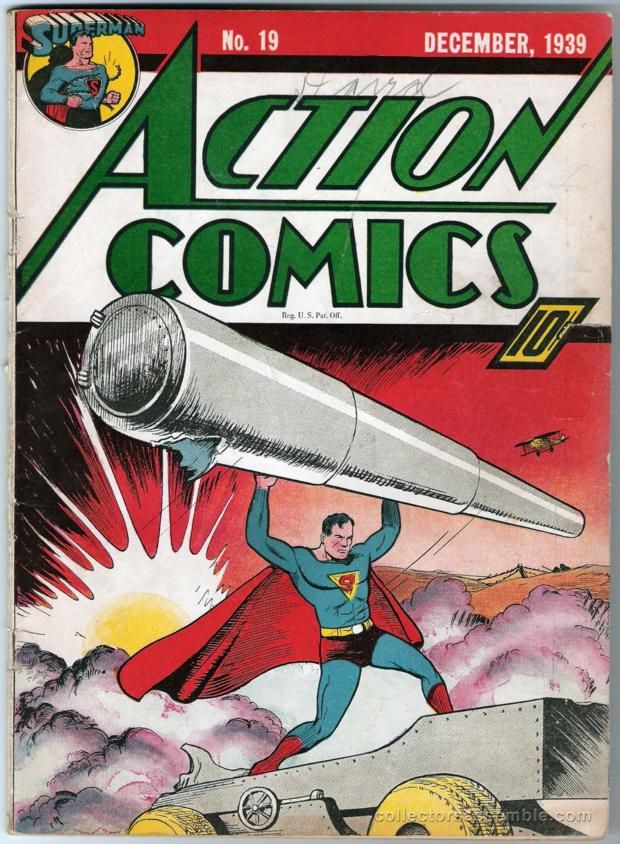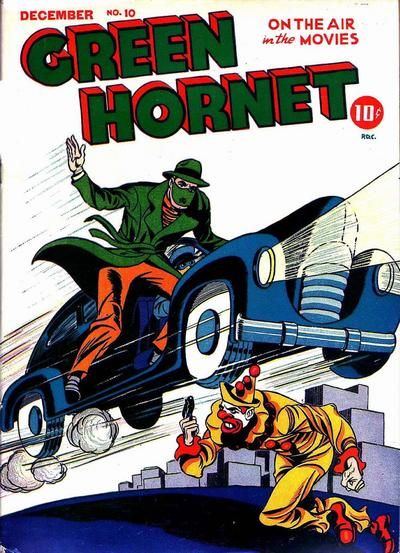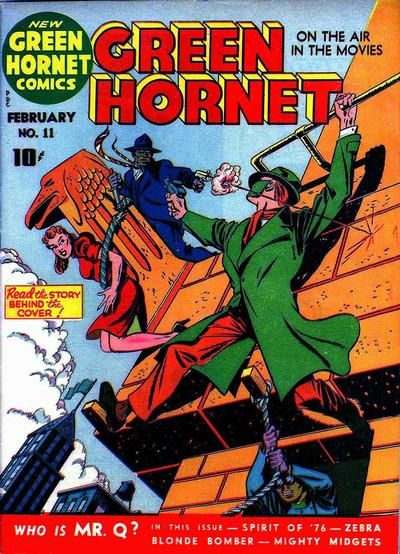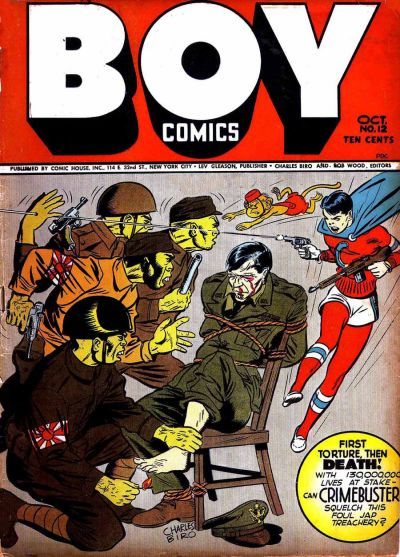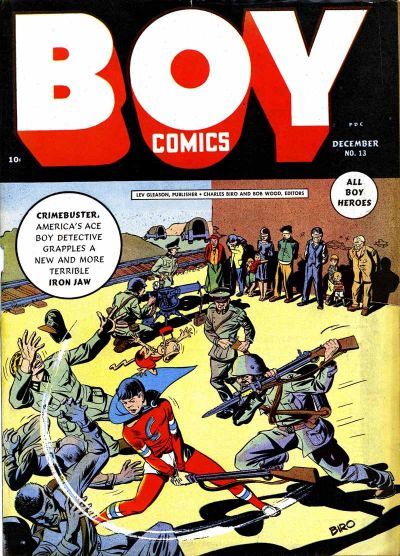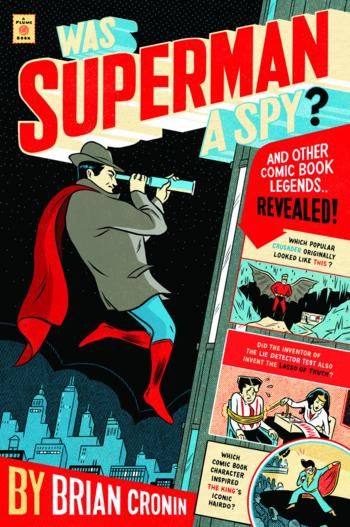Welcome to the three hundredth and eleventh in a series of examinations of comic book legends and whether they are true or false. This week, we discuss how DC took issue with a classic hero seeming "too gay," whether John Byrne determined that James Rhodes would be black and whether comics actually cut down the amount of staples they used during World War II!
Click here for an archive of the previous three hundred and ten.
Let's begin!
COMIC LEGEND: DC felt that Joe Shuster was making Superman look "too gay" in the comic strips.
STATUS: True
As I have discussed a number of times in the past, DC, especially when Whitney Ellsworth took control of editing Superman, became very controlling over how Superman was to be handled, and the way that they delivered these ideas to Jerry Siegel and Joe Shuster tended to be more on the rough side than anything else.
Last week, I discussed the court documents that came out in the recent dispute between the Siegel estate and DC Comics over the copyright to Superman that showed DC's opinions about Lois Lane.
This week, let's finish looking at these documents by also viewing their opinions about how Shuster (or his studio) were depicting Superman, as well.
In a January 1940 letter to Jerry Siegel, Ellsworth took apart a series of then-new strips Siegel and Shuster had just sent in.
After first criticizing the first few strips for various nit-picks, like "the guy on the flagpole looks too much like Edgar Bergen's famous dummy, Charlie McCarthy"...
and "the guards don't seem intense enough"....
Ellsworth spotlights the fourth strip...
Now for the fourth strip. In the first panel, Superman's physique is a bit on the lah-de-dah side. I like particularly his nice fat bottom. His pose in the second picture is reminscent of certain FLIT ads done by a cartoonist who signs himself "Dr. Seuss."
Besides the rather lame problems he had with Superman appearing "too gay," it is interesting to see Ellsworth draw a comparison to the work of a then-not-so-well-known Dr. Seuss. Here's an example of a Flit ad from that time period.
As you can see, Ellsworth is taking issue with what he feels to be odd layouts and character poses, which he felt work for Seuss, but not so much for a straightforward character such as Superman.
Within a year, Shuster (and/or his studio) were following DC's orders pretty well, as Superman had a more conventional superhero physique and poses.
You can read the full letter here at the Uncivil Society (thanks to the Uncivil Society for hosting the documents!)
There's a lot of fun reading there in the various documents, including the bit where Ellsworth complains about then-new Superman artist Wayne Boring (who later, of course, became THE Superman artist for awhile).
Commenter Power-2 most-the-Peoples noted that Jeff Trexler wrote an article on this subject for Newsarama when the documents were made public, so thanks to Jeff Trexler and thanks to Power-2 most-the-Peoples for noting it!
________________________________________________________________________________________
Check out the latest Baseball Legends Revealed to learn about the teenage girl who struck out Babe Ruth and Lou Gehrig back-to-back! Also, discovers whether Ted Williams lost the 1947 MVP because a crotchety Boston sportswriter left him off of his ballot completely, plus...what Hall of Fame Basketball coach was ejected from a Major League Baseball game despite never actually ever playing a baseball game in the Majors?
________________________________________________________________________________________
COMIC LEGEND: John Byrne came up with the idea of making James Rhodes black.
STATUS: I'm Going With False
Reader H.R. Guerra made a suggestion in the official "Comic Book Legends Revealed Suggestions Thread," asking:
I've heard recently that it was John Byrne who decided to make Jim Rhodes african american. He did pencil his first appearance but I haven't seen this referenced anywhere else by the the credited creators of the character.
Byrne actually just did layouts for that first appearance of Rhodes, which was just one page in Iron Man #118.
I asked Bob Layton about it, and he said that no, Rhodes was always going to be black.
And really, if you look at the above page, it is not like Rhodes was clearly going to be a major character from that scene, so unless they already had plans for the character (and Rhodes becomes a major supporting character from #120 on, so I'm sure they did), why would a fill-in artist make suggestions to the writers about the ethnicity of Tony Stark's helicopter pilot? And if he WAS a planned character (which I'm sure he was), then the odds are (and Bob Layton confirms as much) that David Michelinie and Layton (the co-writers of the title) knew what ethnicity Rhodes was going to be.
So I believe Layton's take on it (not that I have actually seen Byrne make any claim to the contrary).
Thanks to Guerra for the suggestion (you all should go to the Comic Book Legends Revealed Suggestions Thread and make suggestions, too!) and thanks to Bob Layton for the answer!
________________________________________________________________________________________
Check out the latest Hockey Legends Revealed to look at the strange history of how a professional wrestling promoter saved the Montreal Canadiens, learn the bizarre story of how out of hand military hockey got during World War II and discover whether angry Edmonton fans really burned Chris Pronger's furniture.
________________________________________________________________________________________
COMIC LEGEND: During World War II, some comics had just one staple in them due to war rationing!
STATUS: True
Travis Pelkie asked:
About 10 years ago, I met at a family reunion/party thing a relative who was a comics dealer, and concentrated more on old comics. He mentioned that a lot of the Golden Age books/books from the '40s only had one staple due to the war rationing. Is this something you ever covered, and is this accurate, or what? It seems plausible, certainly, but in my readings on comics, I'd never come across anything concrete about it.
That's pretty much exactly what happened.
Two staples did the job for most comic book companies in the late 1930s/early 1940s.
Here's an early issue of Action Comics where you can clearly see the two staples...
As the war went on, though, companies DID cut back on staples.
To wit, here's Green Hornet Comics #10 from Harvey Comics in 1943. It had two staples.
Green Hornet Comics #11 had one.
Green Hornet returned to two staples with #20 (oddly enough, in 1944, so still during the war).
Reader Scott Harris had some copies of Boy Comics, by Lev Gleason, and yes, you can see from these late 1943 issues that Boy Comics also just used one staple...
So yes, while staple rationing was not particularly common, especially not at the major companies like National and Timely, it DID occur. More common was paper rationing, where even the big companies had to cut down.
To wit, in Summer 1943, both National and Timely cut back from 68 to 60 pages, and then in the Summer of 1944 they cut from 60 pages to 52.
Thanks for the question, Travis! And thanks for the Boy Comics head's up, Scott!
Okay, that's it for this week!
Thanks to the Grand Comics Database for this week's covers! And thanks to Brandon Hanvey for the Comic Book Legends Revealed logo!
Feel free (heck, I implore you!) to write in with your suggestions for future installments! My e-mail address is cronb01@aol.com. And my Twitter feed is http://twitter.com/brian_cronin, so you can ask me legends there, as well!
Follow Comics Should Be Good on Twitter and on Facebook (also, feel free to share Comic Book Legends Revealed on our Facebook page!). If we hit 3,000 likes on Facebook or 3,000 followers on Twitter, you'll have the option to get a bonus edition of Comic Book Legends the week after we hit 3,000 likes or 3,000 followers! So go like us on Facebook and follow us on Twitter to get that extra Comic Book Legends Revealed! Not only will you get updates when new blog posts show up on both Twitter and Facebook, but you'll get original content from me, as well!
Also, be sure to check out my website, Legends Revealed, where I look into legends about the worlds of entertainment and sports, which you can find here, at legendsrevealed.com.
Here's my book of Comic Book Legends (130 legends - half of them are re-worked classic legends I've featured on the blog and half of them are legends never published on the blog!).
The cover is by artist Mickey Duzyj. He did a great job on it...(click to enlarge)...
If you'd like to order it, you can use the following code if you'd like to send me a bit of a referral fee...
Was Superman a Spy?: And Other Comic Book Legends Revealed
See you all next week!

